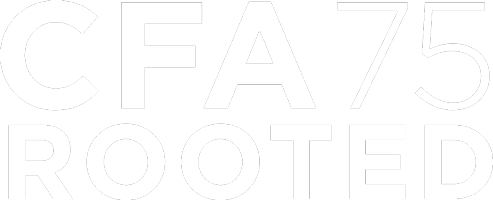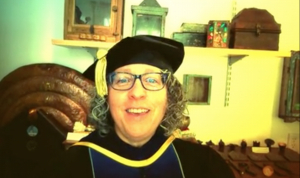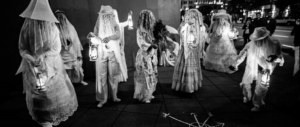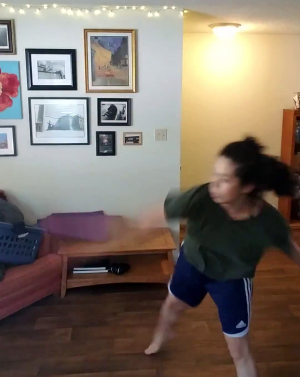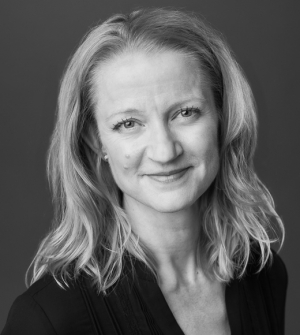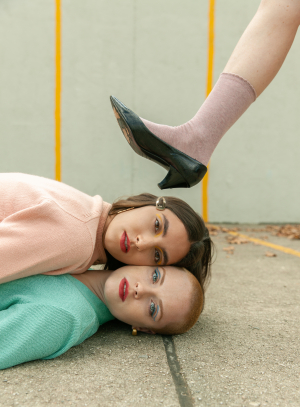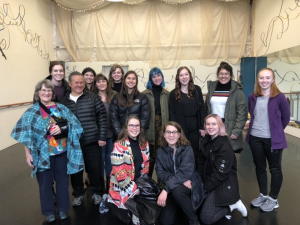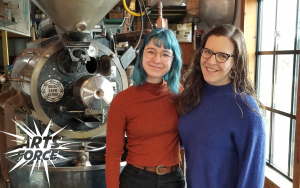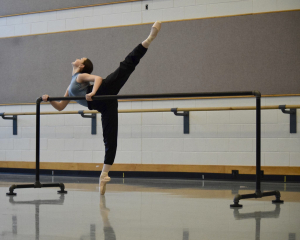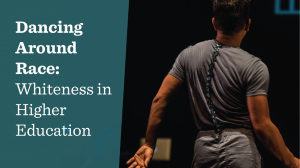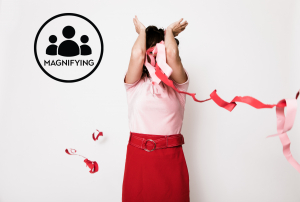Displaying items by tag: School of Dance
As we celebrate the Class of 2020 during this convocation week, faculty members across the five academic units of the College of Fine Arts send their congratulations, encouragement and appreciation to this year's graduates.
Here are just a few of our favorite video messages for the Class of 2020.
From Beth Krensky
Professor, Department of Art & Art History
From Kelby McIntyre-Martinez
Assistant Dean for Arts Education & Community Engagement
From Stacey Jenson
Adjunct Assistant Professor, Department of Theatre
From Robert Baldwin
Professor, School of Music
From Connie Wilkerson
Associate Professor, Department of Film & Media Arts
From Pablo Piantino
Assistant Professor, School of Dance
To see all our faculty videos for the Class of 2020, visit our social media channels here:
College of Fine Arts Facebook
College of Fine Arts Instagram
College of Fine Arts Twitter
And don't forget you can leave messages for our grads all this week at our Live Message Board!
By Kate Mattingly
As a researcher who teaches courses in dance histories, dance studies, and dance criticism, I spend a lot of time thinking about how we communicate through our bodies and our words. My dissertation, which I completed in 2017, analyzes how dance criticism not only responds to a performance but also shapes and influences our value systems and priorities. Historically, dance critics have wielded a lot of power: John Martin named the genre “modern dance” and heavily influenced the success of certain choreographers, like Martha Graham, in the 20th century.
But digital platforms change the status and authority of critics’ words because there are more immediate opportunities to challenge a viewpoint and to use social media platforms to offer different perspectives. A great example of this happened in 2010 when a New York Times critic wrote that Jenifer Ringer, as the Sugar Plum Fairy with New York City Ballet, looked “as if she’d eaten one sugar plum too many.” The outpouring of support for Ringer led to her appearance on The Today Show and Oprah. These interviews are still available online, making the critic's words less definitive. 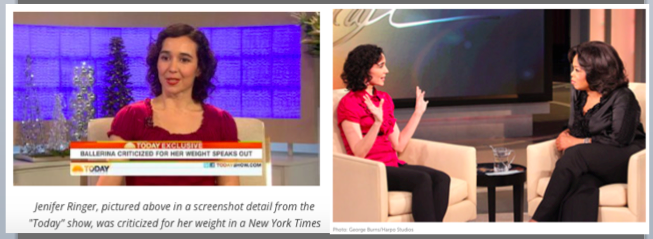
In my scholarship I analyze how the digital sphere opens spaces for a co-existence of different perspectives, and how this brings attention to artists and ideas that have been misrepresented or completely ignored. Much of my current research focuses on how criticism in the 21st century can challenge the sexisms, racisms, and classisms that have circulated through print critics’ writing. On April 14, I gave a lecture for students and faculty at UCLA on digital dance criticism, and how traces of a project by Amara Tabor-Smith called “House/Full of Black Women,” circulated through photographs Amara posted on Facebook, thereby extending the reach of her processions that happened in Oakland, California. This is an important example of how artists bypass a critic who speaks “for” a project and instead gives the artist access to self-representation and self-definition.
In my dance studies course this semester, when we shifted to an online format, students shared final projects through PowerPoint presentations and then we opened online discussions about the topics. The students’ work was stellar and the online discussions deepened and extended the conversations we had begun earlier in the semester when we were meeting together. One particularly timely project, by Todd Lani ’20, examined social media users who can promote social justice or their own fame. Todd used Matt Bernstein as an example of a social media “activist” who thinks of others and dismantles hate and violence against LGBTQ+ communities. Todd wrote, “Growing up in a smaller rural area, the media (more specifically social media) was the only outlet and opportunity that I had to see any representation of someone like myself.”
During this pandemic, as we find ourselves relying on the digital sphere, we might also be noticing the differences between attending a live performance and watching dancing through a screen. There are undoubtedly things that seem to be missing, like the communal experience of watching a performance with a hundred-plus people, or the feeling of liveness and immediacy as an artist creates the movement in your presence. But there are also advantages: many companies are offering performances to view free of charge, and events that happened in far away places are now visible in our homes.
A student-run group at the University of Utah, the Dance Studies Working Group, took a trip to San Francisco in 2018, supported by funding from a FAF Grant, to see a festival called Unbound and attend a Symposium of guest speakers who included Dwight Rhoden, Virginia Johnson, and Marc Brew. When the company’s current performance season had to be cancelled due to COVID-19, SF Ballet released performances from Unbound online. This Friday students and alumni of the Ballet Program are hosting a zoom conversation, organized by Victoria Holmes Johnson ’19, to discuss the possibilities of online transmission, and also what’s missing in this virtual realm.
We think these conversations are important during this time of uncertainty because we hope that the future of dance, like the future of dance criticism, will be more inclusive and equitable. Artists are known for their imaginations, able to problem-solve and think creatively, and their expertise is invaluable at this moment.
Finally, when people use words like “unprecedented” to describe this pandemic, they are making invisible a lot of people who have not had access to services or movement for years, if not decades. People who are confined and dependent on others due to disabilities could be our teachers. I hope that this moment of "uncertainty" is an opportunity for us to look at our interconnectedness: how do we support and nurture one another? how do we honor our different needs and capacities? I hope we do not return to a world that is about individualism, convenience, and control, but rather one that embraces the interdependencies and indeterminacy of life.
Author Kate Mattingly is an assistant professor in the University of Utah School of Dance.
By Jessica Boone
Suspended in chaos and uncertainty, we root to what we know. But what happens when we are studying an art form that depends on shared spaces, experiential learning, and community? We keep dancing.
I have struggled to gather the right words to describe our current situation. The School of Dance’s online classes are in full swing. And just as we settle into a new ‘normal,’ the end is in sight.
I am a first-year graduate student in the Master of Fine Arts in Modern Dance program. It has already been a year of bumpy transitions, but I could never have guessed the school year would end with this upheaval. Dance has grounded me before, and it grounds me now in changing ways.
My professors have been flexible and receptive. They are encouraging, offering ways to challenge us creatively, but with great kindness, they acknowledge the real struggle we are all facing. There is a mutual understanding and respect in knowing we are all doing our best. We are doing our best to show up for ourselves and each other.
I am deeply grateful for the synchronous physical practices. Yes, that means live dance classes on Zoom in my cleared out living room. Though it will never compare to being in the same place as moving bodies engaged in physical exploration, it is the closest we can get at this point. I am happy to move my body with others, see friendly faces, and have some semblance of normalcy. On a base level, it reminds me that I am not alone.
I was visiting Austin, Texas, over our spring break when the dangerous reality of the pandemic escalated. After the announcement that our classes were moving online, I decided to stay put. I spent time grieving the loss of my routine and home inside of the Marriott Center for Dance building. I mourned the loss of face-to-face interaction and body-to-body learning.
I was skeptical of continuing my dance studies online. As a graduate student, I had the privilege of listening in on conversations our faculty were having as they reimagined plans for our classes. I was relieved and reassured by their commitment to finding new ways to support and engage students creatively. I sensed their focus on grace and humanity, as they too were navigating the same shocking shift of daily life.
My worries further eased as my professors reached out to discuss class plans moving forward. Each of my classes developed unique methods for meeting and completing course work. I have classes that meet live online at the same scheduled time as they always have. While communication and learning for other courses are all virtual through videos, discussion boards, and submitted writings. Some classwork is structured, with deadlines, other assignments I work on at my own pace.
I am deeply grateful for the synchronous physical practices. Yes, that means live dance classes on Zoom in my cleared out living room. Though it will never compare to being in the same place as moving bodies engaged in physical exploration, it is the closest we can get at this point. I am happy to move my body with others, see friendly faces, and have some semblance of normalcy. On a base level, it reminds me that I am not alone.
Still, continuing classes has been hard. Focus and motivation are often stubborn to rally. And though dancing doesn’t always feel good right now, I am trusting the lessons it has taught me in the past. I think the dance community will understand when I saw we have always relied on community – we know we need each other. We know how to adapt and improvise – we are resilient. We know how to listen patiently with our whole selves. We know how to tune into our bodies, how to care of them and the bodies of others. We know how to use our energy to propel us forward, to soften our joints, to brace for impact and heavy lifting. We know how to relish moments of joy and abandon when they come.
These are distressing times, but I am hopeful. Though I am relatively new to the University of Utah and am finishing the semester states away, I feel supported by a network of faculty and peers that is rooting for my well-being, my academic success, and the endurance of our broader arts community.
Author Jessica Boone is a first-year graduate student in the School of Dance Masters in Modern Dance program.
Hello from afar: Natalie Desch, School of Dance
Hello to my University of Utah friends out there in the world!
I hope this finds you feeling well and safe right now, wherever you may be. I was approached to write a little ditty about my experiences as a faculty member since our communities and our individual lives have all been uprooted and re-shaped by the current COVID-19 pandemic. Though I’ve never written a blog post, I felt inspired to share a bit of my perspective, especially since so many people have been so supportive through the various challenges we’ve all faced.
To give a little context about me––I’m actually in my first year as a faculty member at the U – and what a year! After spending twenty years as a performing artist and educator in NYC, I earned my master’s degree from the University of Washington in 2014, and then after moving to SLC and working for several years, I was fortunate to join forces with the wonderful folks at the School of Dance at the U.
"But most importantly it has also reinforced some of the fundamental values of dance that nearly all of my students have agreed upon––that humanity needs energetic contact, it needs to act and to move, and that we can take steps to grow and evolve in ways we didn’t think were possible."
This semester, I have been facilitating a variety of courses in the Modern Program, which currently range from a creatively-based composition course with sophomores, a ballet course with juniors, a modern course with seniors, and finally a teaching methods course with graduate students. I have loved getting to know the amazing faculty and staff as this year has progressed, and the students I’ve worked with, have time and again, impressed, inspired and delighted me. It’s been a truly fantastic year for me.
The way this pandemic emerged…not with a traumatic, one-day event, but as a slow, steady build of its scope, threw me for a bit of a loop. I think we were all on the verge of beginning our spring breaks, when I really started to comprehend the serious potential of it all. And then of course, as the weeks of mid-and-late March would unfold, it became clear that everything would change. Initially, I remember being very freaked out at the news that we’d be going to online learning. As someone who is passionate about dance and its fundamental values of energy and movement of the body through real time and real space, the thought of having to enter a liminal, third space was daunting. There were so many questions that came up, but there wasn’t much choice that we had to move forward together and make the best of the situation.
And I’m happy to report that from the first Zoom class I hosted on March 19, things HAVE moved forward! It has been great to have a platform which has for the most part, enabled our class community to come together, not only to practice dance in a new format, asking new things of all of us to make that happen. But most importantly it has also reinforced some of the fundamental values of dance that nearly all of my students have agreed upon––that humanity needs energetic contact, it needs to act and to move, and that we can take steps to grow and evolve in ways we didn’t think were possible.
What I have loved most about my online conversations with my students is that we want to share and empathize with one another. There has been a very vulnerable and honest tone in the meetings I’ve been privileged to witness. I appreciate the passion I hear in their voices to do the best they can in the face of our current reality.
I do not want to ever have online learning replace the beautiful, profound experience of learning in real time and space––experiences that are REALLY face to face. But for now, I am buoyed by the hope that we will help each other through this and will perhaps learn some lessons to take with us as well.
Take care, everyone. Sending my best thoughts and energy to each of you…
Natalie Desch
MAKING ART WORK is a series that taps into the knowledge and experience of seasoned creatives from our community and beyond for the benefit of our students.
Erica MacLean is a photographer, choreographer, director, and performer based in Brooklyn, NY. Originally from Phoenix, Arizona, Ms. MacLean began training at the start of college, where faculty and staff encouraged her to pursue dance as a full-time career. Since then, she has received training in Ballet and Modern Dance at Glendale Community College, Arizona State University, and the University of Utah School of Dance, where she received her BFA. She has performed in the works of Mariah Maloney, Ihsan Rustem, Guy Thorne, Eric Handman, Rebecca Rabideau, Quitalyn Cheramie, Katie Noletto, Elijah Labay, Brianna Lopez, and Patrick Delcorix to name a few. Along the way, MacLean stumbled upon an interest in photography as she attempted to document her choreographic work. She now photographs many fashion and fine art projects/editorials, and has published work in Harper’s Bazaar Poland, Vogue Poland, Vogue Italia, Theme Mag, Floated and many others. She has also recently photographed NYFW FW20 for several designers, including Claudia Li, Collina Strada, and Kim Shui. For all of her projects, MacLean hopes to combine the landscape of human architecture and fashion in an attempt to allow others to create a subjective narrative.
Have you always been equally interested in photography and dance? What affected your decision to get your bachelor's degree in dance?
I haven’t always been interested in both dance and photography, and I’ve definitely never focused on either in equal ratios. When I really love something, I’ll spend 70% of my time on it and the 30% left over gets taken up by other distractions. When I was at the University of Utah, I mostly worked to develop choreographic projects and dance, and photography was just something I picked up to enhance what I was already creating. I wanted to do the best I could to document my work, so I picked up a camera and started shooting.
I got my degree in dance because at the time, it was what made me happiest. I, of course love movement, but the closeness and support of the community was what really made me shift over. I felt secure knowing everyone around me was on a similar path. When I look back, the most valuable things I gained from the U was how to openly view/respect art from all angles, and to stop making work for the sole purpose of pleasing other people. I really learned how to vocalize why I did/didn’t like certain work, why/how a work is important, and if you made something it’s okay if someone didn’t like it. You made choices based on what was important to you, not them. Don’t sweat it so much.
How do dance and photography blend in your everyday life now? 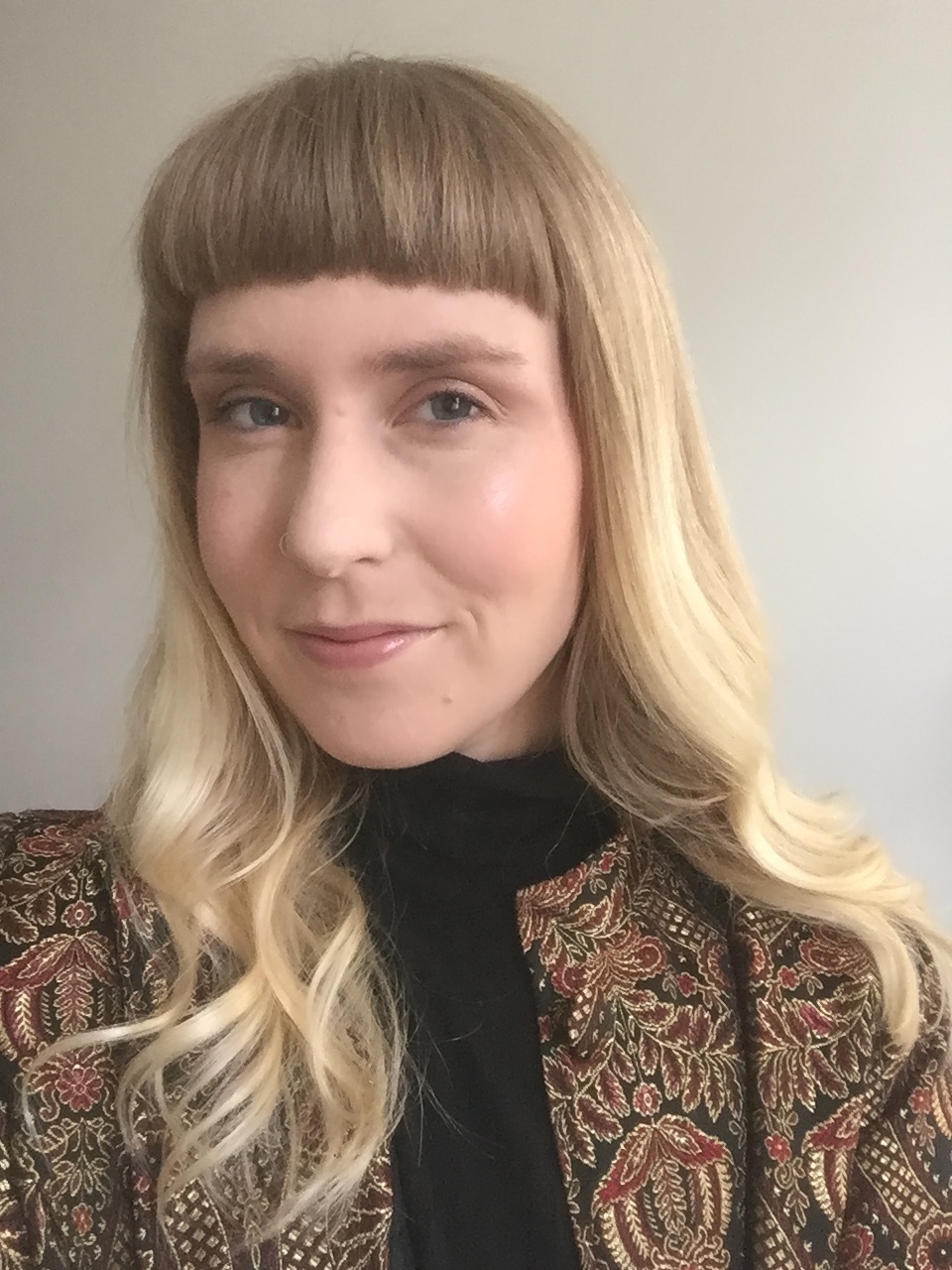
Currently, dance comes into my life as choreography in photographs. I’m mostly photographing for creative fashion and editorial content, and less “dance” type photos. When I’m developing these types of images, it’s literally in the same way that I’d create a choreographic work. I turn on some music, think it up, and focus on texture, color, light, shapes, and mood. I always think of this thing my professor, Ellen Bromberg, once told me. She said “You are creating the world we are going to live in for a little while. What goes into it?” This informs almost all of my work.
To be clear, at the moment, I’m not dancing all of the time. Dance in NYC is VERY expensive, and I only take class when I can afford it. In a way, I’ve blended the two because I love and want to do both, but also I’ve had to make sacrifices to sustain a living.
When I look back, the most valuable things I gained from the U was how to openly view/respect art from all angles, and to stop making work for the sole purpose of pleasing other people. I really learned how to vocalize why I did/didn’t like certain work, why/how a work is important, and if you made something it’s okay if someone didn’t like it. You made choices based on what was important to you, not them. Don’t sweat it so much.
What prompted your decision to move to New York City? What has been the most unexpected aspect of your life and career there?
I moved to NYC because there was a huge opportunity for both dance and photography. I was interested in photographing fashion, but I also wanted to live in a city with a large dance community. It was a pretty obvious choice. The most unexpected aspect of moving to NYC was that it’s actually pretty affordable to live here. That’s about it! Everything, for the most part, is as expected.
How did you get connected to Ballet West as an intern? What did you gain there?
When I was at Ballet West, I was working alongside Beau Pearson specifically as his photography intern. I was a follower of his on Instagram, and loved the technical lighting aspects of his images, so I reached out. I basically worked with him on whatever projects he had going on at the time, and this happened to be “The Shakespeare Suite” and various portraits of dancers from the company. I shot alongside Beau for many rehearsals, promotional photoshoots, and dress rehearsals at the Capitol Theatre. Because of this, I gained a ton of insight in retouching images in photoshop. I learned to apply the techniques he uses ( frequency separation/dodge&burn) in my own photos, and still use them when working various editorial projects.
What were the key steps in building your portfolio of photography clients, and what was the most challenging or intimidating job you have taken on?
When I was building my portfolio, I really had to think about what it was that I wanted to do in my career and go from there. In this case, I like photographing people, extravagant clothes, movement, and some sort of narrative. So it made sense for me to create a book with fashion and editorial in mind. My biggest dream is to photograph/creative direct for Rodarte and Gucci, and for this to manifest, I have to show them that I’m very capable, versatile, and have a very clear sense of personal style. I’m always in the process of developing my book, but a key step to get here was to shoot as much as I possibly could to develop my style. I’d write down a shot list/concepts, pick up some cool clothes from the thrift store, and force my friends to shoot with me(they didn’t mind too much). Over time, I’d just add or get rid of relevant photos, and always keep track of the overall style.
The most intimidating job I’ve taken on so far was very recent. I shot photos at three official shows during New York Fashion Week for Claudia Li, Collina Strada, and Kim Shui. I worked primarily on backstage images for Claudia and Kim, then shot portraits of Hayley Williams from Paramore for Collina Strada. It was pretty scary because I’ve never had to do anything remotely like this. There are people running around everywhere, stylists quickly forcing models into outfits, and production crew shouting left and right. It was also challenging because although I was a house photographer and working specifically for the designers, there’s unfortunately a lot of misogynistic attitudes toward female photographers in the industry. I found myself often pushed around, and stepped on or in front of, by a sea of male photographers while I was just trying to do my job. I learned pretty quickly that if I wanted to get a good shot, I had to take up a lot of space, and be extremely vocal with them. And although it was difficult, I really did have an incredible experience.
Follow Erica's work on Instagram at @erica_maclean or at https://www.ericamaclean.com/.
ArtsForce takes Career Trek to Rise Up School of Dance
By Sara Kenrick
In January, ArtsForce took college of fine arts students on a career trek to the Rise Up School of Dance to learn more about the art professionals in Salt Lake City’s dance industry and what it’s like to start a non-profit organization. 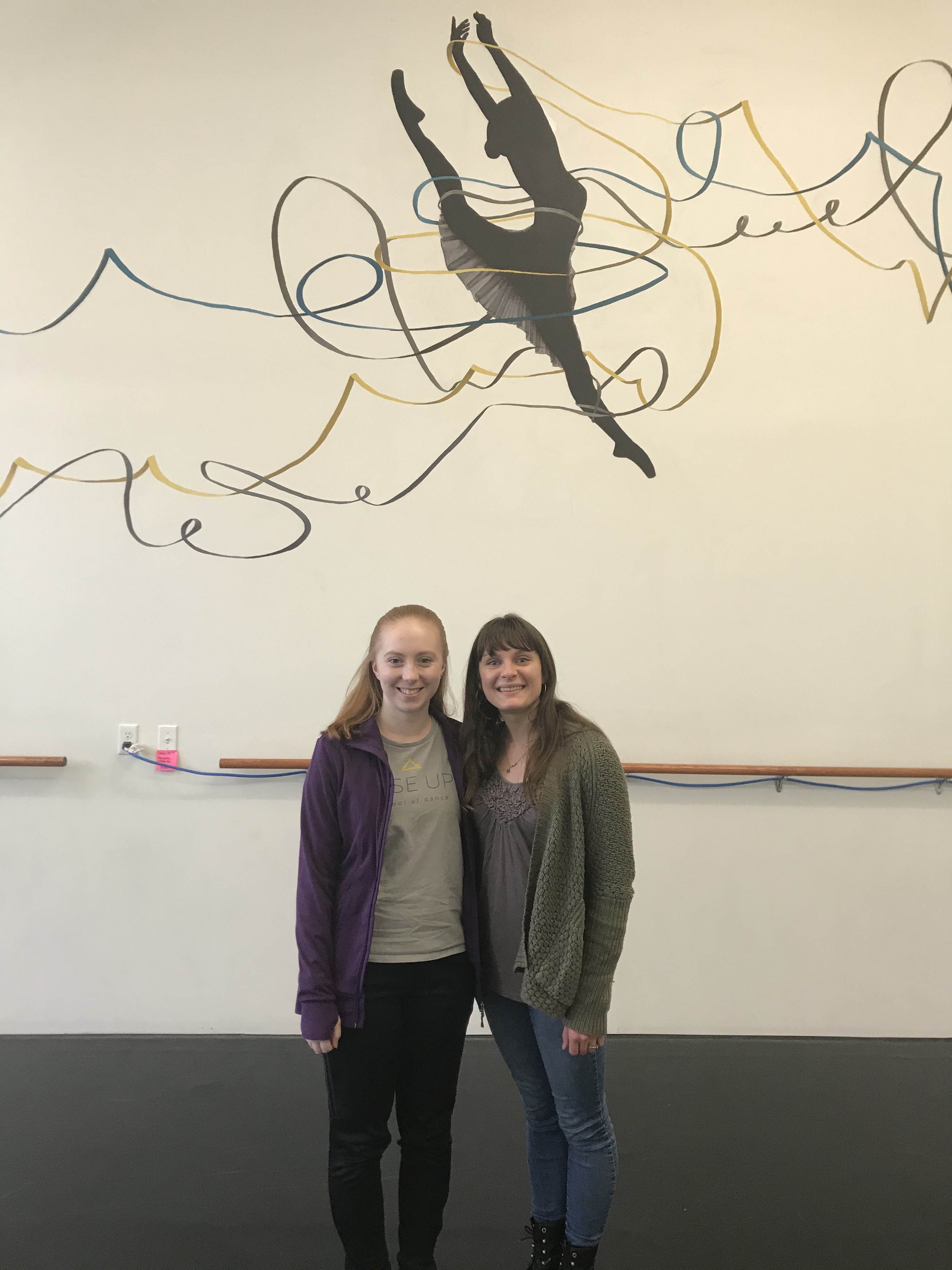
Alyssa Bertelsen started Rise Up to give underprivileged kids the opportunity to dance without limitations. She feels it’s important that ballet should be supportive and inclusive so that anyone can flourish through their art rather than despite their art. It was incredible to hear from someone who wants to change the environment of their art for the better. This really inspired me to think about the difference we can make as students if we ask ourselves what we have to offer in our communities and how we can use our skills to better our crafts and our industries.
Alyssa took us on a tour of the dance space where you can see that there is a lot of love and thought put into her practice. She explained that they rent dance studio space from the community church. The studio is a step in creating the non-profit that she wants to lead for years to come. We learned that starting a non-profit doesn’t necessarily mean having all of the pieces put together right away -- it’s one step at a time, little by little.
Alyssa and one of her fellow teachers, Savannah, discussed the importance of the work the teachers do to plan and run their classes. Volunteer teachers donate their hours for a free class every Saturday and regular teachers are paid to make sure that they can live on their art. It’s an extremely collaborative process and the result is a community of dancers that work together to make sure everyone can enjoy dance no matter their financial situation or background.
It was a privilege to hear from Alyssa and her team about the amazing work they do at Rise Up School of Dance. Check out their mission and classes here!
We hope you can join Arts Force on our next career trek. And don't forget to RSVP for our annual networking event on Saturday, March 7th!
Visit our website to find out how you can get involved!
Author Sara Kenrick is an ArtsForce Emerging Leaders Intern and a Film Production major with a minor in Theatre.
ArtsForce is a student-led organization dedicated to helping students articulate the value of their arts degree.
By Laurie Ann Larson
Hello College of Fine Arts! Last month I had the opportunity to grab coffee with U of U School of Dance alumna Kat Martinez and ask her some questions about her life and career. Since graduation, Kat has launched into an impressive array of political, educational, and artistic involvements in Utah. She has served on the Murray Arts Advisory Board and was recently elected to the Murray City Council. Kat also has an extensive record of volunteer work all over the Salt Lake City area. Kat is particularly interested ADA accessibility, arts access, childcare, and education.
Since I am a senior approaching graduation, I wanted to ask Kat about her transition out of college and see if she could offer me any advice. Kat explained that the transition out of college wasn’t straightforward for her.
“I had felt funneled down this path of professional dance, and for a while I didn’t know I could do something else,” she said. “I started to realize this might not be how I do the most good -- both for myself and my community."
While it was only a year between graduation and her first teaching position, she told me she did a lot of ‘sampling’ in that time in between. She said, “It’s okay to try things and then move on.” This is how she has carved out a space for herself where she is able to do all the things that make her life feel full. She also told me it was important to be really honest with herself about what she wanted out of life. She explained how important it is to acknowledge your own needs. “I always knew I wanted kids,” she admited.
“Do you need a stable 9 to 5 job? Are you okay working on contract? Do you want to be able to travel at the drop of a hat?” The demands of creative careers can look different from other professions, Kat explained.
On her transition into policy work, Kat noted: “It’s important to know that your skills as an artist are important in other areas. It took me a while to realize my value. We need to be comfortable taking up spaces on committees and councils even if it’s not directly related to the arts.”
I’ll leave you with Kats parting advice: “The cool thing about life is that there are so many ways to do it right.”
A few ArtsForce takeaways:
-
Give yourself permission to fail and change your mind.
-
Be honest with yourself about your priorities.
-
Think about where your passions meet a need, and how you can do good for yourself and others.
-
Know that your skills as an artist are important in other areas.
Thanks so much for reading, I hope that you will keep Kat’s advice in mind as you make your way in the world.
Stay tuned for more helpful tips from professionals that we will be interviewing in the next couple of months!
And don't forget to RSVP for the upcoming ArtsForce Networking Event.
March 7th, 2020
10:00AM - 1:00PM
Gould Auditorium at Marriot Library
If you are interested or want to learn more about ArtsForce, join here.
Author Laurie Anne Larson is a Film and Media Arts major with an emphasis in Animation and a minor in Sculpture. She is an Emerging Leaders Intern at ArtsForce. ArtsForce is a student-led organization dedicated to articulating the value of your arts degree and helping you transition from college to the workforce.
The School of Dance presents four exciting dances in Spring Utah Ballet, including faculty works, new creations and traditional pieces. The show opens February 6th at the Marriott Center for Dance. Utah Ballet will include an original piece from award winning choreographer Heather Gray, and a world premiere from School of Dance assistant professor Melissa Bobick. In visiting professor Rick McCullough’s "Preludes," dancers will be joined on stage by pianist Dr. Vedrana Subotic from the University of Utah School of Music. Finally, Utah Ballet will include assistant professor Chris Alloways-Ramsey’s reimagining of the romantic "La Vivandière," originally choreographed by Arthur Saint-Léon.
Guest artist Heather Gray originally choreographed "Il Riposo" over 15 years ago, with the idea of creating “an eccentric classical ballet. I have always loved how traditional ballet choreographic form typically incorporated line, unison and exact precision of movement... What would happen if one dancer were to break free from tradition and were to find their own unique way of moving within the group?” she asks.
This question serves as the basis of her choreography and remains something she continues to reflect on throughout her creative process.
“The movement vocabulary was inspired by using simple balletic movements designed to push the limits. The movement was also created with a technically strong dancer in mind because agility would be required. Elongated lines, mixed with intricate contemporary footwork would help me to create an interesting aesthetic as the piece was taking form. This piece is choreographed to three Vivaldi concertos, which generated a perfect framework for the style.”
Over the years, "Il Riposo" has received many accolades, including being selected for the National Choreographic plan at the Regional Dance America Festival as well as winning 1st place at the Youth America Grand Prix Ballet Competition.
Assistant professor Melissa Bobick’s "UNCOVERED" will make its world premiere at Utah Ballet. Bobick has created movement that is accented by beautiful, full skirts designed by School of Dance costume shop director Chris Larson.
“These skirts, which represent the ‘costumes’ we feel we must wear to be ready to face the world, were an integral part of the choreography’s creation and informed the movement quality extensively,” Bobick says. "The performers in the piece have used the collaborative process to explore the range of emotions they feel within themselves in response to their masks. At times, the masks are quite burdensome and difficult to carry. At other times, they offer us comfort and security. Yet, in either instance, they are always with us. As we are wrestling with our masks, however, being truly seen is all it takes to help us let them go. In that place of vulnerability, we discover who we really are and no longer feel 'UNCOVERED.'”
Visiting professor Rick McCullough’s Preludes is a meditation on how ballet dancers prepare and warm-up for performance.
“Observing myself and others at the barre, I thought that personalities were revealed in the way dancers approached their warm-ups. Some dancers were nervous and self-centered, others were easy-going and lethargic, some were introspective and thoughtful, others might be running late and anxious. Each had their own 'Prelude' to their time on stage, that place of transition from dancer to stage artist,” explains McCullough. “Essentially, 'Preludes' is a group of character studies set to piano Mazurkas, Etudes, and Preludes of Frédéric Chopin, each with its own mood.”
McCullough originally created the piece on students at Southern Methodist University in 1986, and has re-staged it several times since.
“Originally I had hoped to make duets, but not having enough men, I decided to use the familiar ballet barre as the "partner" so to speak. Barre is one of the most familiar and comfortable places for ballet dancers, and the dancers move over, under, and around it,” he says.
Pianist Dr. Subotic, associate professor from the U’s School of Music, will join the dancers on stage to provide live accompaniment for the performance, marking a first for "Preludes."
The program concludes with "La Vivandière," a bright, romantic ballet with choreography by Arthur Saint-Léon set to music by Cesare Pugni. It was presented at Her Majesty's Theatre in London in 1844, and subsequently restaged for the Paris Opera in 1848. This ballet tells the story of Kathi, a vivandière who sold provisions to troops during a war, and Hans, the soldier she falls in love with. Christopher Alloways-Ramsey has restaged the Pas de Six based upon Saint-Léon's choreography. This Pas de Six, which has been performed by ballet companies all over the world, is known as either the "La Vivandière Pas de Six," or, in Russia, the "Markitenka Pas de Six."
Utah Ballet runs February 6 – February 15. Don’t miss this delightful evening of ballet!
For tickets and showtimes visit https://tickets.utah.edu/events/utah-ballet-ii/
Students get in for free with Arts Pass!
School of Dance examines inequity in “Dancing Around Race: Whiteness in Higher Education”
• What obstacles get in the way of racial equity in academic settings?
• How do we honor dance forms in our curriculum that are not represented within the identities of faculty?
• How do we dismantle the hierarchies embedded in the teaching of histories and theories of dance?
• What does it look/feel like to have racial equity in dance?
• What does the future look like? What steps can we take?
This week, the U School of Dance will gather with our community of artists and educators, as well as speakers Gerald Casel, Rebecca Chaleff, Kimani Fowlin, and Tria Blu Wakpa for “Dancing Around Race,” a four-day immersion in these questions (among others!) and the accompanying practices that challenge and uproot the systemic exclusions whiteness has formed.
Assistant professor Kate Mattingly started to plan the project after attending the National Dance Education Conference where she presented her paper, “Connecting Dance Histories, Theories, and Criticism.” At the conference, Gerald Casel was also presenting his work, “Dancing Around Race – Interrogating Whiteness in Dance,” in which he brought together curators, critics, artists, and donors in the Bay Area to discuss race and colorblind racial ideology, issues and problems around diversity, and resilience and sustainability.
“Both of our presentations bypassed a typical pedagogical approach of looking at individual dancers who ‘overcome’ barriers, and focused on the systemic exclusions that prevent artists, students, and faculty from gaining access to opportunities,” Mattingly described.
Teaming up with colleague Kimani Fowlin, who was also at the conference, the three began to shape a program bringing these vital dialogues back to the University of Utah. They wanted to make a dedicated space to “address and challenge systemic exclusions in curricular design, teaching practices, and course contents.”
Tria Blu Wakpa and Rebecca Chaleff, who had both been panelists with Mattingly at a recent Dance Studies Association conference in Malta, were also clear choices for such a panel. In Malta, Blu Wakpa, Chaleff and Mattingly had focused their discussion on whiteness, settler colonialism, and injustices of recognition.
Along with Maile Arvin and Erika George, two scholars invested in research and teaching that calls attention to systemic exclusions and healing practices, Mattingly clarified key intentions for the program at the U, specifically in connecting students and faculty.
Among these goals, of which there are understandably many, the organizers hope to start building long-term and sustainable practices that redistribute unequal power dynamics, work to dismantle barriers in access in both course materials and curricula, foreground the importance of decolonizing methodologies, and positively engage students and faculty in practices of healing and self-care.
Increasing equity and access is already an active focus within the School of Dance, as evidenced by ongoing faculty- and student-led efforts. “Since I arrived at the University of Utah in July of 2017, I have admired the investment and insights of students in the ballet program who are addressing and challenging systemic exclusions,” Mattingly said.
For example, the Dance Studies Working Group, formed in January of 2018, traveled to San Francisco for talks and performances at the Unbound Festival and Boundless Symposium. (Read about their experience here!) Victoria Holmes, the founder of this group, won the CFA 2019 College of Fine Arts Outstanding Undergraduate Researcher award. Her thesis called attention to barriers and challenges faced by dancers of color, historically and currently.
“Dancing Around Race” is an opportunity to identify other ways to take positive action. “One of the ongoing challenges of this work is that people in positions of power are disinclined to change systems that bring them benefits, and what I see in the students at the U is that future generations of leaders are dedicated to asking hard questions and calling attention to oppressive environments,” Mattingly said.
“Dancing Around Race: Whiteness in Higher Education” Public Events:
January 16 Panel Discussion
With guests Gerald Casel, Rebecca Chaleff, Tria Blu Wakpa, and Kimani Fowlin moderated by Kate Mattingly
12:25 - 1:45pm in the Marriott Center for Dance Theater
January 17 Panel Discussion “Decolonizing Methodologies”
With Guests Maile Arvin, Tria Blu Wakpa, and Charles Sepulveda
2 - 3:20pm in Gardner Commons 5490
This project has been supported by a Dee Grant from the University of Utah.
MAGNIFYING No. 23: Molly Heller
MAGNIFYING is a series dedicated to showcasing the talent of our students, faculty, and staff to help you learn more about the remarkable individuals within our creative community here at the College of Fine Arts.
Molly Heller is an assistant professor in the School of Dance and the director of Heartland, a Salt Lake City collective combining dance, visual art, and music composition/performance. She is also an alumni, earning her MFA in the School of Dance. Her research investigates performance as a healing practice and the relationship between physical expression and emotion. This coming Saturday, Heartland will present “Cosmos {{ Performance + Dance Party }}” at the Utah Museum of Contemporary Art.
Molly’s choreographic work is an extension of her interest in health and wellbeing, as well as an interweaving of theater practices and dance. Her work has been presented nationwide in venues such as: Urban Lounge (SLC), Beehive Concert Venue (SLC), Shawl Anderson Dance Center (Berkeley), Eccles Regent Street Blackbox Theater (SLC), Kingsbury Hall for TEDx SaltLakeCity, Gowanus Art + Production (NYC), Danspace Project at St. Mark’s Church (NYC), Movement Research at the Judson Church (NYC), Green Space (NYC), DUMBO Dance Festival (Brooklyn, NY), The Mahaney Center for the Arts (Middlebury, VT), Balance Dance Company (Boise, ID), Boise State University, Westminster College (SLC), Sugar Space Studio for the Arts (SLC), and the Ladies’ Literary Club (SLC). 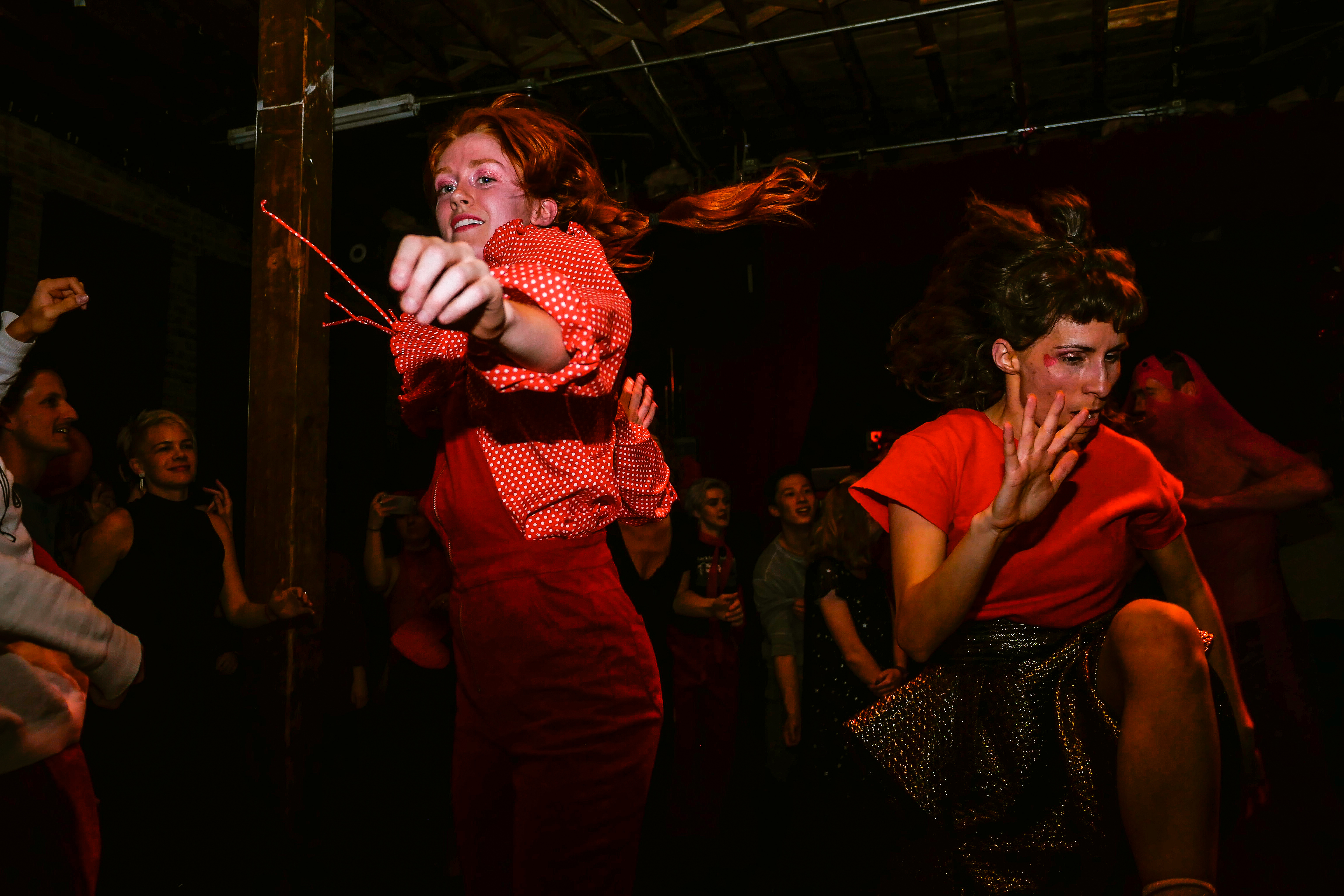 Molly Heller and Marissa Mooney mid dance-party | Photo Tori Duhaime
Molly Heller and Marissa Mooney mid dance-party | Photo Tori Duhaime
Your work for Heartland Collective is truly multidisciplinary. Why are you inspired to work with artists from different mediums?
Heartland was born from the desire to invest in this group of people that reciprocally believe in commitment, a love-centered approach to art making, and intense focus. The relationships fostered within Heartland have been primary, and the multidisciplinary nature of the collective is a result of opening up space for our artistic interests to manifest. As the director, my role is to listen to the desires of each individual and to support their evolution. By supporting and nurturing the individual, the collective also expands (and the direction of our work continues to reveal itself along the way).
What is your most recent fascination or surprising discovery?
I am fascinated by the things that stretch me the most in life. My most recent fascination revolves around closure - how I crave and desire for events in my life to have punctuated endings (I imagine I'm not alone in this). The vulnerability within letting go and in allowing closure to be non-linear and self actualized is what we're exposing within "Cosmos." I am discovering on a personal level that healing/release can happen with strangers and if we can't choose our endings in life, we can practice curating beginnings.
Do you have any habitual practices or rituals that ground your movement and choreography practice? How do you set up your process for success?
I am deeply invested in improvisational practices that both locate me and present impossibilities. The trying, doing, and showing up for the work becomes the focus, rather than prioritizing physical outcomes/movement invention. Before beginning rehearsals, I offer structured practices for the collective to investigate that influence the direction of the choreography. These movement rituals are designed to activate one's whole self within the whole space. They intentionally challenge sight, balance, facial expressivity, and the antennas of the body (hands/feet). We have been naming these practices, FINDING.
What is one unexpected place you wish dance would occur?
I am interested in roaming performances - where the location and perimeters move and change throughout a period of time (and inevitably where performers have to adapt). Heartland has been experimenting with roaming/pop-up performances over the last year. Our last performance of this nature, traveled north to south on Main St. (beginning at the AT&T parking lot and finished at Tinwell). The idea of a moving performance is not necessarily unexpected, but what occurs within this approach will always be unexpected and unpredictable. It also allows us to work in public spaces where people find our work who might not typically engage with dance. There is an inverse relationality to this type of engagement - instead of waiting for an audience to join us, we are going to them. What presents itself in those moments feels magical, it is exactly what it needs to be. And we embrace this.
SEE HEARTLAND THIS WEEKEND!
Heartland Collective Presents: Cosmos {{Performance + DANCE PARTY}}
When: The Winter Solstice
Saturday, December 21st, 8-10pm
Time: Doors open at 7:30pm, performance begins at 8pm
Where: Utah Museum of Contemporary ArtCost: $12, Cash or Venmo
Performers: Nick Blaylock, Brian Gerke, Molly Heller, Marissa Mooney, Melissa Younker, PLUS a surprise guest.
Music: Nick Foster and Mike Wall

